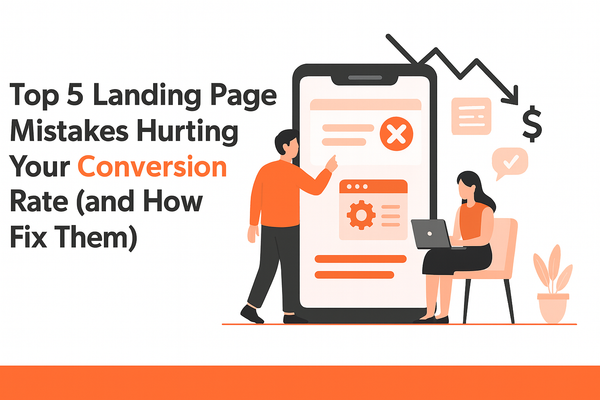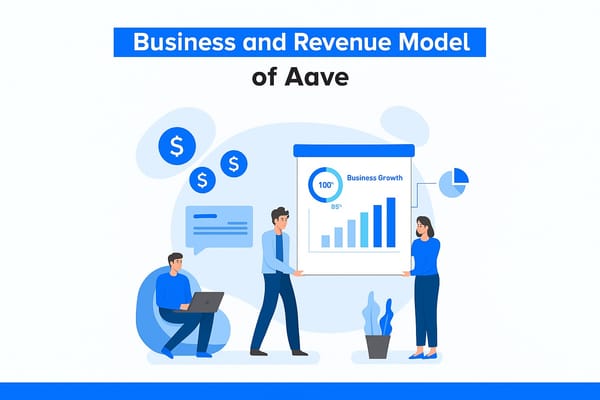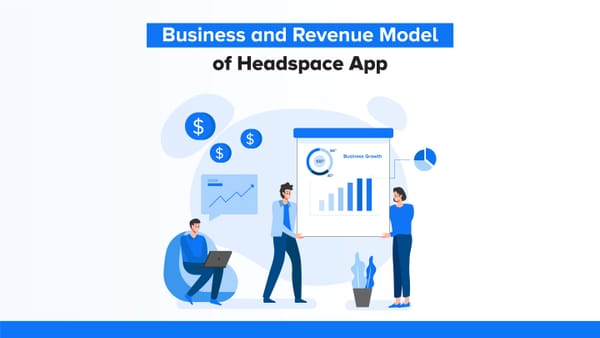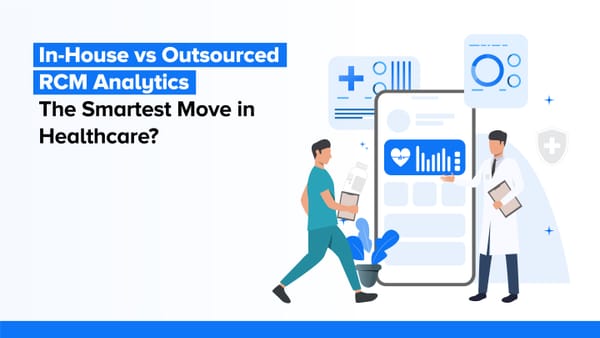Healthcare App Development Trends in 2025 You Simply Can’t Ignore
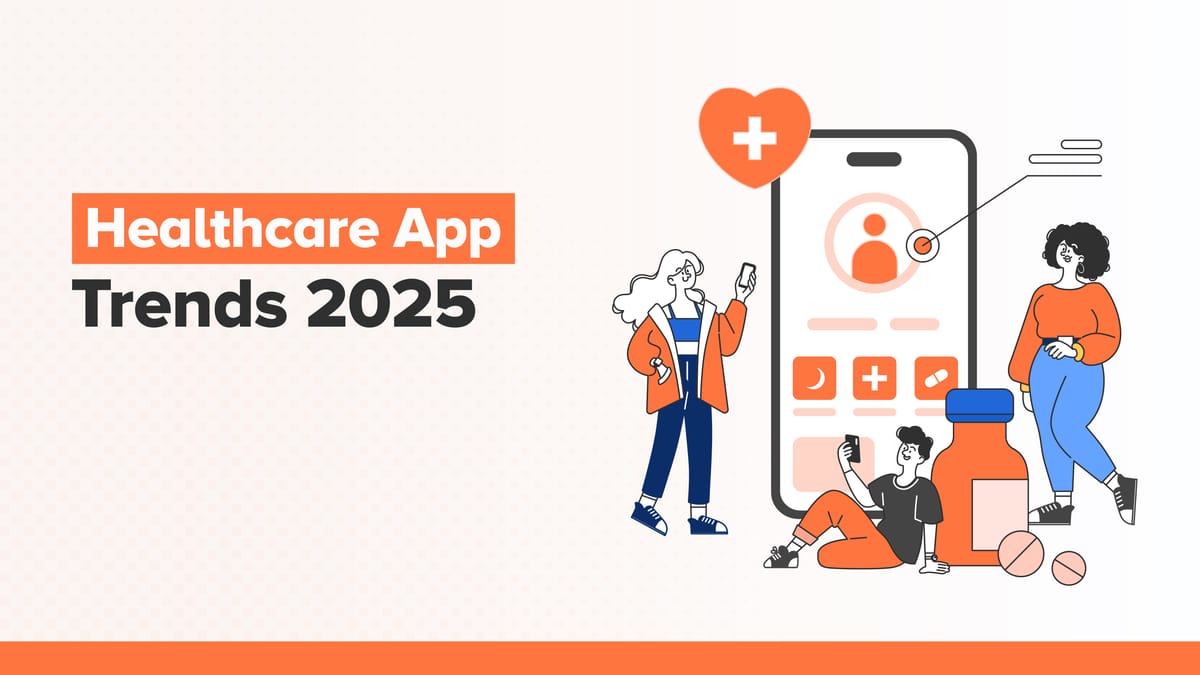
Healthcare is undergoing a quiet revolution, one that’s being led by our screens. What once required a clinic visit is now happening through apps, powered by AI, data, and smart design. From fitness tracking to real-time diagnostics, healthcare app development transforms how care is delivered and experienced.
And if you're planning to build a healthcare app, it's important to understand where the market is headed. And if history is any indication, the pace of change is likely to accelerate.
Take 2020, for example. While the world battled COVID-19, the health tech industry saw its own explosive growth. According to CB Insights, funding for telemedicine, AI-driven care, and remote patient monitoring surged nearly 300% compared to the previous quarter. The number of telehealth deals doubled in Q1 2020 alone, hitting 103.
This momentum isn’t just visible in how we use health apps; it’s also reflected in where the money is going. In 2024, investment in AI-powered medical note-taking apps doubled, as tech giants like Microsoft and Amazon and a wave of healthtech startups raced to tap into the $26 billion AI healthcare market.
As we step into 2025, this trend is only growing stronger. The future of healthcare is being built now, and these are the app development trends you can’t afford to ignore.
Top Healthcare Trends shaping 2025
Let’s break down the trends shaping healthcare in 2025.
AI Medical Scribes
AI scribes are quickly becoming a big deal in mobile healthcare. These tools help doctors take notes automatically during appointments, and they’re getting a lot of attention. Notably, in a recent survey, 65% of healthcare professionals said AI could best support them with clinical documentation, and 51% believed it could save two or more hours per day per provider.
And it’s this growing impact that’s now catching the eye of investors. In 2024, startups that focus on building digital scribes technology raised $800 million, nearly double the $390 million raised in 2023, according to PitchBook.
The reason is simple: healthcare teams want to spend less on paperwork and more time with patients, and mobile AI scribes make that possible. Even big tech is in the game. Microsoft (via Nuance), Amazon, and Oracle are rolling out AI tools that help doctors auto-generate visit transcripts and clinical summaries, showing just how vital AI scribes are becoming in everyday healthcare.
Telemedicine Expands to Full Virtual Healthcare
Telemedicine has played a transformative role in recent years, enabling patients to connect with physicians and medical providers remotely. The goal of these healthcare apps is to prevent problems before they snowball and lower the cost of care by making doctor visits, prescriptions, and follow-ups easily accessible from your phone.
As a result, more physicians are embracing digital health technologies in their practice. Governments are also stepping in to update regulations and reimbursement policies to support the delivery of virtual care.
These combined efforts are making healthcare more accessible and affordable for all. According to Fortune Business Insights, the global telemedicine market is projected to grow from $104.6 billion in 2024 to $111.9 billion in 2025, reaching nearly $334 billion by 2032.
Source: Fortune Business Insights
Source: Fortune Business Insights
Remote Monitoring: Patient Care, Constant & Connected
Remote patient monitoring (RPM) was already gaining ground before the COVID-19 pandemic. But when in-person visits became risky, RPM quickly moved from a growing trend to a core part of healthcare. It allowed doctors to monitor patients remotely, especially those with chronic conditions, while keeping everyone safer. And even as the pandemic fades, the demand for this kind of connected care isn’t going anywhere.
Today, mobile apps combine smart wearable devices, sensors, and telehealth to track health data, such as blood pressure, glucose, and oxygen levels, among other metrics, in real-time, providing doctors with a clearer view of patient health between visits. The global RPM market, valued at $24.39 billion in 2023, reached $27.72 billion in 2024 and is expected to grow to $56.94 billion by 2030. Companies like Biofourmis, Teladoc Health, and Accuhealth are leading the way, building tools that make digital healthcare solutions more proactive, personal, and always connected.
Source: Markets And Markets
Big Data and the Quiet Shift from Reactive to Predictive Care
Big data is one of the most important shifts happening in healthcare right now. According to the root analysis report, the global big data in healthcare market size is estimated to grow from USD 78 billion in 2024 to USD 540 billion by 2035. This growth reflects a major transformation from reactive treatments to predictive, data-driven care.
Today’s mobile healthcare apps can pull real-time information from EHRs, wearables, remote monitors, and even genomics, which gives clinicians a complete and dynamic view of each patient. Moreover, doctors can now identify risks earlier and provide personalised treatments tailored to each patient, all while reducing unnecessary costs.
According to the 2025 Deloitte survey report, over 70% of healthcare leaders now consider data analytics as a top priority, especially for improving productivity and operational efficiency.
Source: Roots Analysis
AI and Personalised Care
Rising chronic diseases, the demand for early diagnosis, and a flood of healthcare data are putting pressure on systems to deliver more competent care. That is where the AI is stepping up to analyse everything from genetics to wearables that deliver truly personalised treatment. According to Grand View Research, the global AI in healthcare market was valued at $32.3 billion in 2024 and projected to grow to a massive $208.2 billion by 2030.
Source: Grand View Research
Today's AI is quietly reshaping healthcare with machine learning at its core. Even now, chatbots have evolved to the point where they are capable of answering clinical questions, flagging symptoms, and supporting patients 24/7. Microsoft’s AI diagnostic tool recently achieved 85% accuracy on complex medical cases, outpacing human doctors.
Source: Grand View Research
AR & VR in Healthcare
The Grand View Report indicates that the augmented reality (AR) and virtual reality (VR) market in healthcare is currently worth $3.4 billion and is projected to grow at an annual rate of 16.8% over the next seven years.
This is where AR and VR truly shine, meeting the rising demand for hands-on medical training, virtual surgeries, and remote patient care. Platforms like Osso VR and Microsoft HoloLens are already helping doctors train in lifelike simulations.
For patients, VR offers more than just innovation; it provides a trauma-free, calming environment that aids in pain relief, reduces anxiety, and facilitates faster recovery through gamified rehabilitation experiences.
Source: Grand View Research
Source: Grand View Research
Internet of Things (IoMT) is Reshaping Everyday Care
From smartwatches that monitor your heart to insulin patches that adjust doses in real time and connected medical devices are quietly changing how we manage health. These tools are collectively known as the Internet of Medical Things (IoMT), enabling care to be more proactive, remote, and continuous. According to Grand View Research, the global IoMT market was valued at $230.69 billion in 2024 and is expected to grow at a CAGR of 18.2% from 2025 to 2030.
The COVID-19 pandemic accelerated the adoption of telemedicine and remote monitoring, propelling wearable health technology into the spotlight. Today, devices such as smartwatches, fitness trackers, and portable monitors are used across all age groups to track vital signs, including heart rate, oxygen levels, sleep patterns, and other key metrics.
These IoMT-enabled wearables provide doctors with a live window into a patient’s health, allowing for early interventions, reducing hospital visits, and improving chronic care. From preventive check-ins to daily wellness, they’re enabling a 360-degree, data-driven approach to modern healthcare. As the Mickensy report shows, with the help of IoMT, up to $265 billion in healthcare services could shift from hospitals to homes by 2025, making remote care more scalable, efficient and patient-friendly.
Source: Grand View Research
Final Thoughts
Looking ahead, these healthcare technology trends aren’t just shaping apps; they’re reshaping how care is delivered and experienced across the entire patient journey. From early diagnosis and personalised treatments to real-time monitoring and AI-driven support, digital health tools are transforming the way patients and providers connect.
What matters now is how we use this momentum. By building healthcare apps with clarity, empathy, and purpose, we can deliver solutions that are not only efficient but also truly patient-centred and future-ready.

